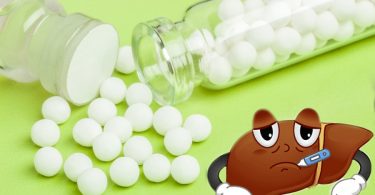It is the process of formation of new sperm (spermatozoa) from the parent cell spermatogonia. The sperm formation starts at the age of 13. Nearly 150 million sperms are formed daily in a healthy adult.
Spermatogenesis is divided into three stages:
- Cell multiplication
- Transformation.
- Maturation.
(A) Cell Multiplication
The basal germ cell of seminiferous tubule “spermatogonia”, undergoes rapid proliferation to provide the millions of sperm that have to be produced.
The spermatogonia, on division, separate into two types. Type A spermatogonia, which preserves spermatogonial cell pool, type B, which provides the next generation of germ cells, i.e. primary spermatocyte. Spermatogonia may divide several times before changing into a primary spermatocyte so that the number of germ cells gets considerably multiplied here.
The primary spermatocyte is divided to produce two secondary spermatocytes. This is the most important event because this division is meiotic. The number of chromosomes gets reduced from 46 to 23 and this is the beginning of a gamete or sex cell. The secondary spermatocytes are short-lived and rapidly divide to produce two spermatids.
(B) Transformation
The spermatids mark the end of the cell proliferation cycle and do not divide any more. They gradually transform themselves into spermatozoa by throwing away all extra cytoplasm.
- The nucleus of spermatids shrink to smaller size by loosing water from nucleoplasm. The chromosomes also becomes compact.
- The golgi bodies vacuoles enlarges and acquire a dense body called acrosomal granule. Its wall then spread over a considerable part of the nucleus at one pole like a cap (acrosome).
- A long tail develop with an elaborate mechanism for vibratory movement.
(C) Maturation
Although the newly formed sperms in the testes may look perfect in shape, they still need further maturation to fertilize the ovum.
Maturation is a complex process and occurs mainly in the epididymis. In epididymis sperm got the capability to fertilize an ova.
Factors Affecting Spermatogenesis
- Hormones: Follicle-stimulating hormone (F.S.H.) and Luteinising hormone (L.H.), play a vital role in stimulating spermatogenesis. Testosterone is needed in high concentration for meiotic division in spermatogenesis.
- Temperature: Normal spermatogenesis requires a temperature of about 3 ºC lower than the core body temperature. Persons working in a hot environment or wearing tight-fitting woollen or nylon underwear develops low sperm count.
- Vitamins: Vitamin E, A, C and B12 are essential for spermatogenesis. Vitamin E has been called the ‘anti-sterility’ vitamin.
- X-Rays: X-ray radiation of testes damage spermatogenesis process.
MORPHOLOGY OF SPERM
The sperms are microscopic, thread-like and motile cell containing haploid number of chromosomes.
A sperm is distinguished into a head, middle piece and tail. Head is the enlarged end of a sperm, containing the large nucleus capped by the acrosome. The middle piece is the mitochondrial portion. In the middle piece, the axial filament is surrounded by a spiral mitochondrial sheath which provides energy for motility of the sperm.
In between the head and the middle piece, there is a small, somewhat constricted neck containing the two centrioles. The tail is several times longer than the head. In its major part, called the main piece, the axial filament is surrounded by a thin layer of cytoplasm.
Reference: Textbook of Practice of Medicine with Homoeopathic Therapeutics by Kamal Kansal & Rakesh Kaushal





